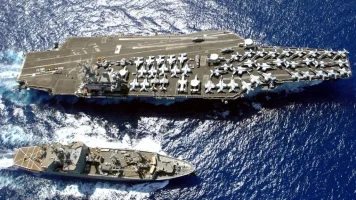- Views: 2K
- Replies: 11
In a major enhancement of its strategic strike capabilities, the Indian Navy plans to equip its next-generation Project 75-India (P-75I) conventional submarines with the vertically-launched BrahMos Extended-Range (ER) supersonic cruise missile.
This integration will provide the submarines with the formidable ability to launch precision attacks on land and sea targets up to 800 kilometres away while remaining submerged, significantly strengthening India's maritime defence and deterrence posture in the Indian Ocean Region.
The plan, confirmed by Dr. Sudhir Mishra, the former head of BrahMos Aerospace, involves fitting the new submarines with a minimum of eight Vertical Launch System (VLS) modules.
A VLS allows missiles to be fired from perpendicular tubes, enabling rapid, versatile, and stealthy strikes from underwater platforms.
This capability transforms the submarine from a traditional anti-ship and surveillance vessel into a potent platform for projecting power deep into enemy territory without compromising its position.
The P-75I programme, a cornerstone of the 'Make in India' initiative in the defence sector, aims to construct six highly advanced diesel-electric submarines.
In early 2025, Germany’s ThyssenKrupp Marine Systems (TKMS) was selected as the preferred foreign partner to collaborate with India's Mazagon Dock Shipbuilders Limited (MDL).
The chosen platform is a derivative of the HDW Class 214 submarine, which will be customised to meet the Indian Navy's specific requirements.
While the standard U-214NG design does not include a VLS, discussions with TKMS are underway to incorporate this crucial modification.
In addition to advanced weaponry, the German firm has also committed to developing a more powerful Air-Independent Propulsion (AIP) system for the submarines.
AIP technology is critical for modern conventional submarines as it allows them to remain submerged for weeks, drastically reducing their vulnerability to detection compared to older models that must surface more frequently.
The weapon at the heart of this upgrade is the BrahMos-ER, a variant of the successful Indo-Russian BrahMos missile.
The ER version nearly doubles the range of the original missile from 450 km to 800 km. Travelling at speeds of Mach 2.8 (almost three times the speed of sound), the BrahMos is exceptionally difficult to intercept.
It uses a combination of satellite and inertial navigation for mid-course guidance and an active radar seeker for terminal accuracy, ensuring precision against high-value targets like enemy warships and critical land infrastructure.
In parallel, the Indian Navy is also upgrading its existing fleet to maintain a credible combat edge.
Older submarines, including the Scorpène (Kalvari-class) and Kilo (Sindhughosh-class) boats, are slated to be armed with the BrahMos-Next Generation (NG) missile.
The BrahMos-NG is a lighter and more compact version designed specifically to be fired from standard 533mm torpedo tubes. This avoids the need for major structural modifications, providing a cost-effective enhancement to the legacy fleet's anti-ship and land-attack capabilities.
This dual-pronged modernisation strategy ensures that the entire conventional submarine arm of the Indian Navy will be equipped with supersonic cruise missiles.
The P-75I submarines, with their long-range VLS-launched missiles and extended underwater endurance, will serve as a key strategic asset.
This capability is seen as essential for India's maritime security, providing a powerful deterrent and shaping the operational environment in the increasingly contested waters of the Indo-Pacific.


